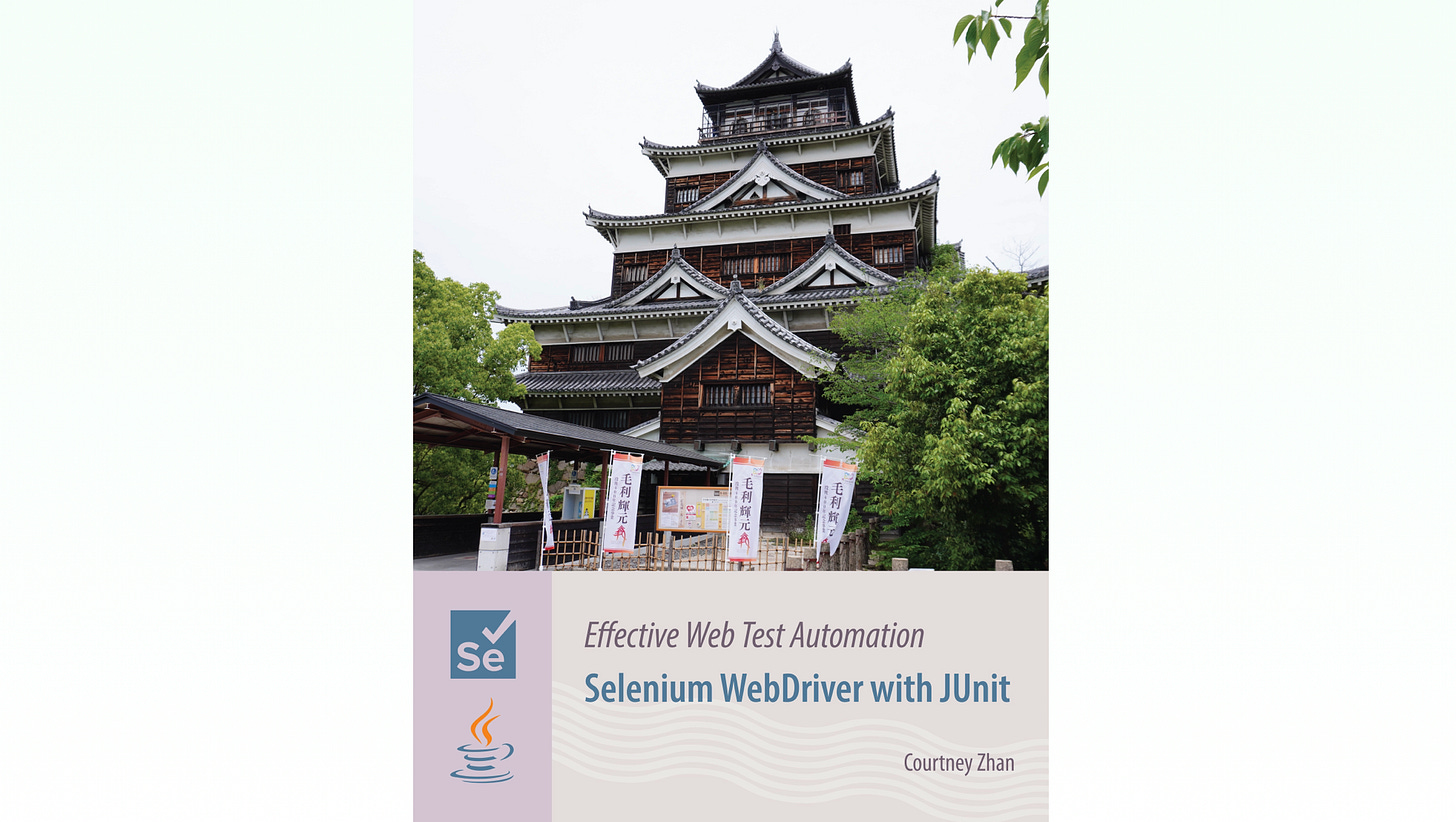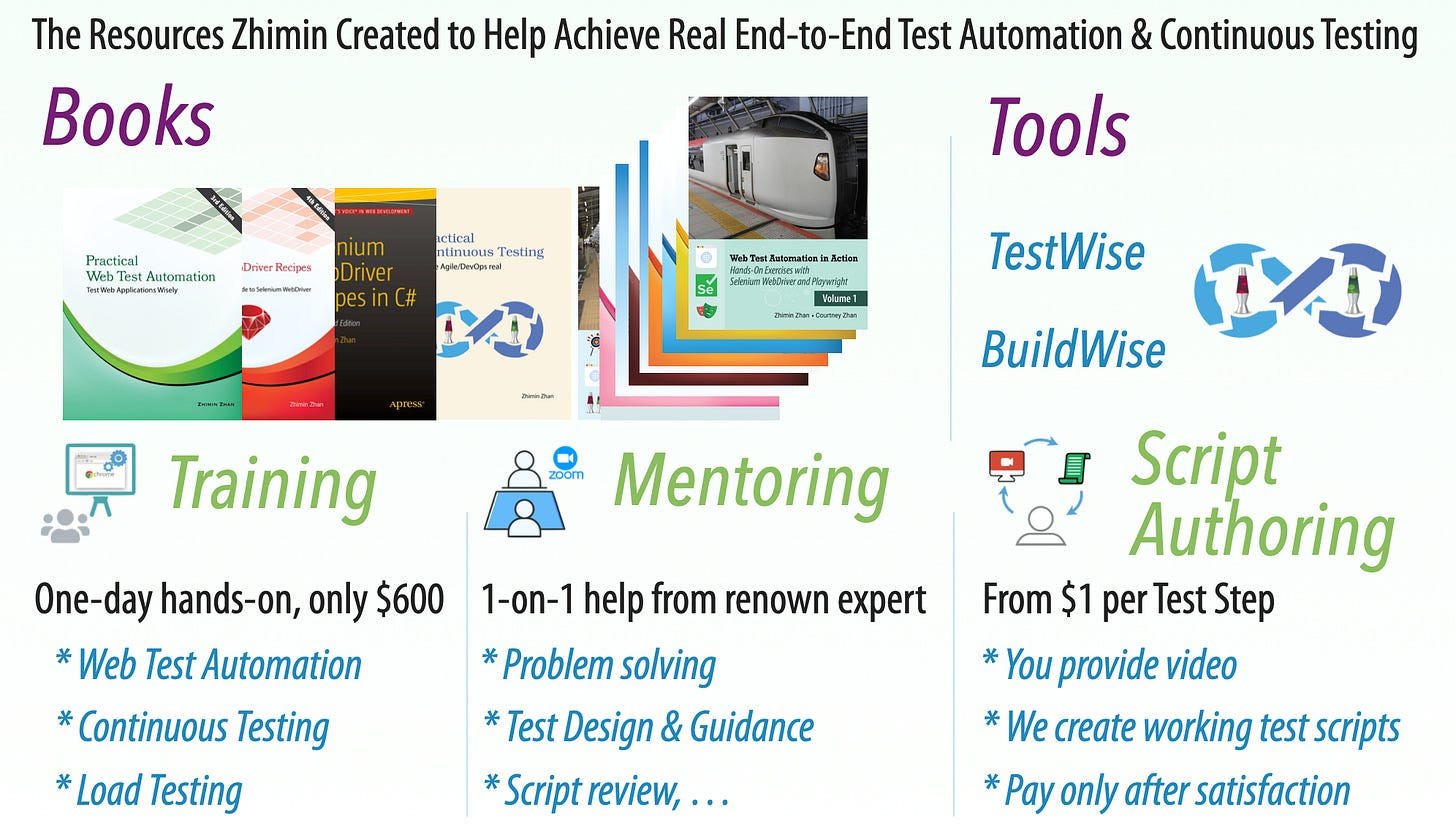Announcing my new book, "Effective Web Test Automation with Selenium WebDriver and JUnit"
A book on achieving effective web test automation that is both practically useful and easy to implement.
I’m excited to announce my new book, Effective Web Test Automation with Selenium WebDriver and JUnit. Its eBook form is now available on Leanpub for $20. (Annual-Paid subscribers to this newsletter can get it free). The first three chapters are available in the sample.
This is the first in a planned “Effective Test Automation” series, with future titles covering other frameworks and languages:
Effective Web Test Automation with Selenium WebDriver and RSpec (Ruby)
Effective Web Test Automation with Playwright Test and TypeScript (JavaScript)
Effective Web Test Automation with Selenium WebDriver and Pytest (Python)
Effective Mobile Test Automation with Appium and RSpec (Ruby)
I’ve already started the preparation work, including scripting and setting up Continuous Testing, but I haven’t decided the final release order yet. If you’re interested in a particular tech stack, please leave a comment.
Why this book?
I began blogging on Medium in December 2021, mainly writing about end-to-end (E2E) test automation, continuous testing, and programming, one article per week. To date, I’ve published over 190 articles, 21 of which have been featured on software testing newsletters.
Admittedly, there were times when I struggled to come up with new ideas. One day, my father suggested, “Why not write a series about how you approach E2E test automation in a new project, and how you set up a continuous testing server to run the suite frequently?” I replied, “That is quite straightforward.” But he reminded me, “Others might find it difficult. Think back to your internship, the senior test automation engineer, the head of the testing excellence center at that major telecom company, who promoted Playwright but couldn’t keep even a dozen Playwright tests valid.”
That conversation inspired me to write a few articles on the topic, which ended up being more popular than most of my previous posts. Along the way, I began to feel that a book format might serve the material better. So, here it is.
What’s unique about this book series?
1. Bridging E2E Test Automation and Continuous Testing
Typically, E2E test automation and Continuous Testing are treated as separate topics, but I disagree. Often, capable test automation engineers can develop high-quality automated E2E tests, yet without knowledge of Continuous Testing (or access to the right tools), they will struggle to maintain the suite, leading it to eventually fail. Pity!
This book is a pioneering attempt to combine two closely related (but in reality, often separated) topics, E2E test automation and Continuous Testing, into a single, cohesive guide.
2. Develop 20+ automated E2E tests for a real web app
Unlike many tutorial-style technical books that use oversimplified examples, this book guides readers through developing real and practically useful test scripts (which you can apply directly to work), against one real website. Through each carefully chosen exercise, readers are guided to master essential automation scripting techniques.
Another important aspect is the size of the test suite. Only after a test suite reaches a certain size, test automation engineers begin to appreciate the importance of script maintenance, the benefits of maintainable test design and refactoring, and the necessity of Continuous Testing.
3. Short, Focused Sessions to Master Test Automation Gradually
Each session is designed with a specific focus and typically takes 15–20 minutes to complete. Test automation concepts and best practices are introduced gradually, with key knowledge points reinforced through repetition in subsequent sessions.
4. This series cover the top two leading web automation frameworks: Selenium WebDriver and Playwright
Test automation is a cornerstone of Agile development. In 2003, Watir (Web Application Testing in Ruby) pioneered browser-based, end-to-end (functional) testing. Since then, numerous web automation frameworks have emerged and faded. Two decades later, Selenium WebDriver and Playwright remain the dominant frameworks in the field.
In this first book of the series, the automation framework used is Selenium WebDriver, the testing framework is JUnit, and the scripting language is, of course, Java.
Related reading:



